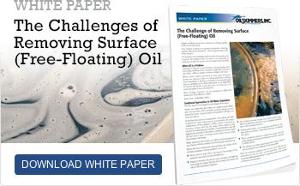Cleaning up the Tramp Oil Act
For a year after changing to synthetic coolant, the people at Charles E. Kline Co., Warren, Ohio were plagued by the problems of contamination from tramp oil. Every “home remedy” they could think of was tried.
“We shot air into the tank. We ran the level up and tried to glide the tramp oil off with ropes. We even had our men try to scoop it off with their hands. And we were still having to change coolant every three of four months,” plant superintendent Sam Scala explained.
With synthetic coolant, any tramp oil must be continually removed from the surface of its tank so the synthetic can “breathe.” Otherwise, bacteria collects on the tramp oil and destroys the coolant.
“We were adding chemicals once a month to keep the correct concentration so that it would protect the metal tubing we were spraying with the coolant. And we still had suds and mold in the tank,” Scala recounted.
By the end of that year, the company had spent about $30,000 to change and re-charge the coolant in it’s 11,000-gallon tank, and that didn’t include the costs for each day of downtime necessary and the man hours spent in emptying and cleaning the tank every few months.
The company manufactures welded mechanical tubing for the automotive, playground, rack, ornamental, and construction industries. Its decision to use synthetic coolants was based on the fact that they are easily disposable, cleaner, and less slippery, therefore safer in the plant, than oil. Ronald Sibera, VP of operations, designed the coolant tank for this material’s use.
Enough’s Enough!
But after a year’s battle with the tramp oil problem, he and Superintendent Scala said enough’s enough. They had read about oil skimmers and then talked with numerous chemical company representatives about the merits of such equipment. “All recommended skimmers,” Scala said.
On the basis of their investigation, Scala and Sibera then installed the Model 6V from Oil Skimmers, Inc., Cleveland. This unit utilizes a floating tube system. Its closed-loop polyurethane tube adjusts to the level of the coolant and attracts tramp oil as it roams over the surface of the tank. The tube is continuously drawn through scrapers which clean it before it again enters the coolant tank. Easily mounted above the tank, the 6V needs no tail pulleys or idler wheels within the tank. It is virtually maintenance free.
The oil recovered by the system is deposited in 55-gallon drums and is recycled by a processor into hydraulic oil for the plant’s subsequent use. About 30 drums are filled each year.
The plant is testing its coolant strength twice a week and checking it once a week for bacteria build-up. Biocides are used to keep the tank free of bacteria. “We would be using twice the amount of biocides if we didn’t have the Oil Skimmer unit,” Scala estimates. “It has paid for itself over and over,” he adds.



